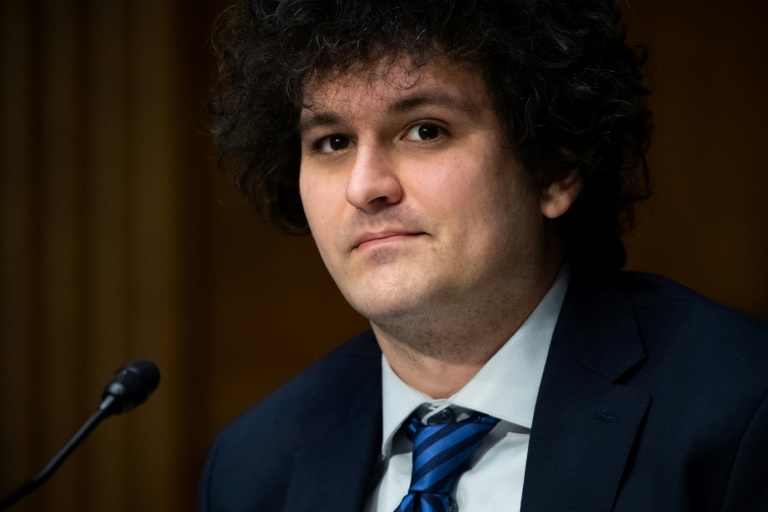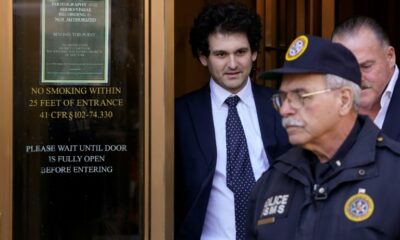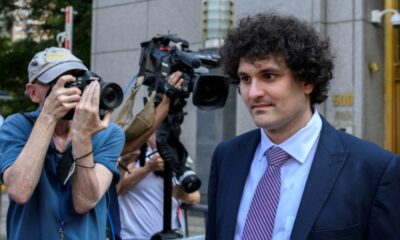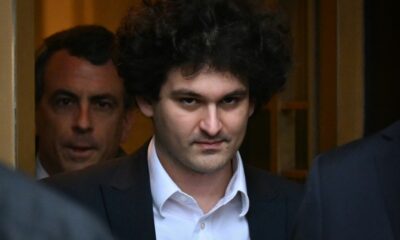He was the face of cryptocurrency, and a young one at that — a media darling seemingly destined to unite the sector.
But the stunning rise of Sam Bankman-Fried and his FTX platform would be matched by an equally spectacular fall when it was revealed that billions of dollars of clients’ funds had been moved and spent without their consent.
After a jury in 2023 found him guilty of seven counts, a federal judge in New York sentenced Bankman-Fried on Thursday to 25 years for leading the fraudulent scheme.
Before it all came crashing down, the native Californian had amassed a fortune at one point estimated to be worth $26 billion. “Save for Mark Zuckerberg, no one in history has ever gotten so rich so young,” read a headline in Forbes, which put Bankman-Fried on its cover in October 2021.
In the span of a few months, the Massachusetts Institute of Technology graduate with a degree in physics had taken the startup he co-founded in 2019 and built it up into the world’s second largest crypto exchange platform.
He quickly became more than just a young entrepreneur, fashioning himself as an ambassador of crypto and making his first appearance in Congress in December 2021, testifying before lawmakers on the then-novel form of currency.
The public would come to know a seemingly oddball whiz kid with a mop of curly dark hair who, when not suited up for appearances on Capitol Hill, wore shorts and a T-shirt.
– Center of crypto world –
The son of two Stanford University professors, Bankman-Fried ventured outside the world of cryptocurrencies, making donations to US politicians and persuading celebrities like American football star Tom Brady or basketball player Stephen Curry to pitch FTX — endorsements for which they were richly rewarded.
The young man known as SBF would charm US lawmakers with his straight talk and vision of crypto’s future, including recommendations for an extensive regulatory regime — a position at odds with many in the sector.
He devised project after project, from a platform for people to make donations in cryptocurrency to Ukraine to a market for financial derivative products that stepped on the toes of Wall Street.
A vegan, Bankman-Fried said he believed in the concept of effective altruism — finding the best way to help other people, in particular by donating all or part of one’s wealth to charity rather than, say, volunteering at a soup kitchen.
When the cryptocurrency world lurched into crisis in the spring of 2022, Bankman-Fried billed himself as a savior, buying the troubled platform BlockFi, and shares in another company that was in trouble, Voyager.
“We take our duty seriously to protect the digital asset ecosystem and its customers,” he tweeted at the time, as some people were comparing him — barely 30 years old then — to the legendary investing guru Warren Buffett.
– Financial high wire –
But behind his reassurances, Bankman-Fried was walking a financial high wire, as revealed later in court documents and testimony.
Without their knowledge, Bankman-Fried’s team used the money of FTX customers to cover risky operations by an affiliated trading company called Alameda Research, as well as to buy posh real estate and to make political donations.
In November 2022, the crypto news outlet CoinDesk revealed that Alameda had converted a large part of its assets into FTT, a crypto token created by FTX. The news caused that currency to plummet.
Hours later Changpeng Zhao, the head of Binance, the world’s largest crypto exchange platform, announced it was selling all the FTT tokens it held, causing it to lose 90 percent of its value in a matter of days and taking the Bankman-Fried empire with it.
His fortune having vanished overnight, Bankman-Fried was extradited from the Bahamas, where FTX had its headquarters. In December 2022 he was indicted on charges of fraud and racketeering.
After five weeks of trial, the jury quickly reached a guilty verdict on all seven counts, which carry a potential maximum sentence of 110 years behind bars.
In closing arguments, the defense said their client had acted in “good faith” and was overtaken by circumstances and the financial ineptitude of close associates who testified against him to gain leniency from prosecutors.
Prosecutors portrayed the defendant as an extremely smart man consumed by greed who knew what he was doing when FTX funds were secretly funneled to his personal hedge fund.
According to prosecutors, at the time of the bankruptcy of FTX, just over $8 billion belonging to customers had vanished into bad investments at Alameda.
“Who had control? That’s the question. It was one person: the defendant,” the lead prosecutor concluded.

 Business5 months ago
Business5 months ago
 Business4 months ago
Business4 months ago
 Events3 months ago
Events3 months ago
 People4 months ago
People4 months ago
 Events6 months ago
Events6 months ago
















